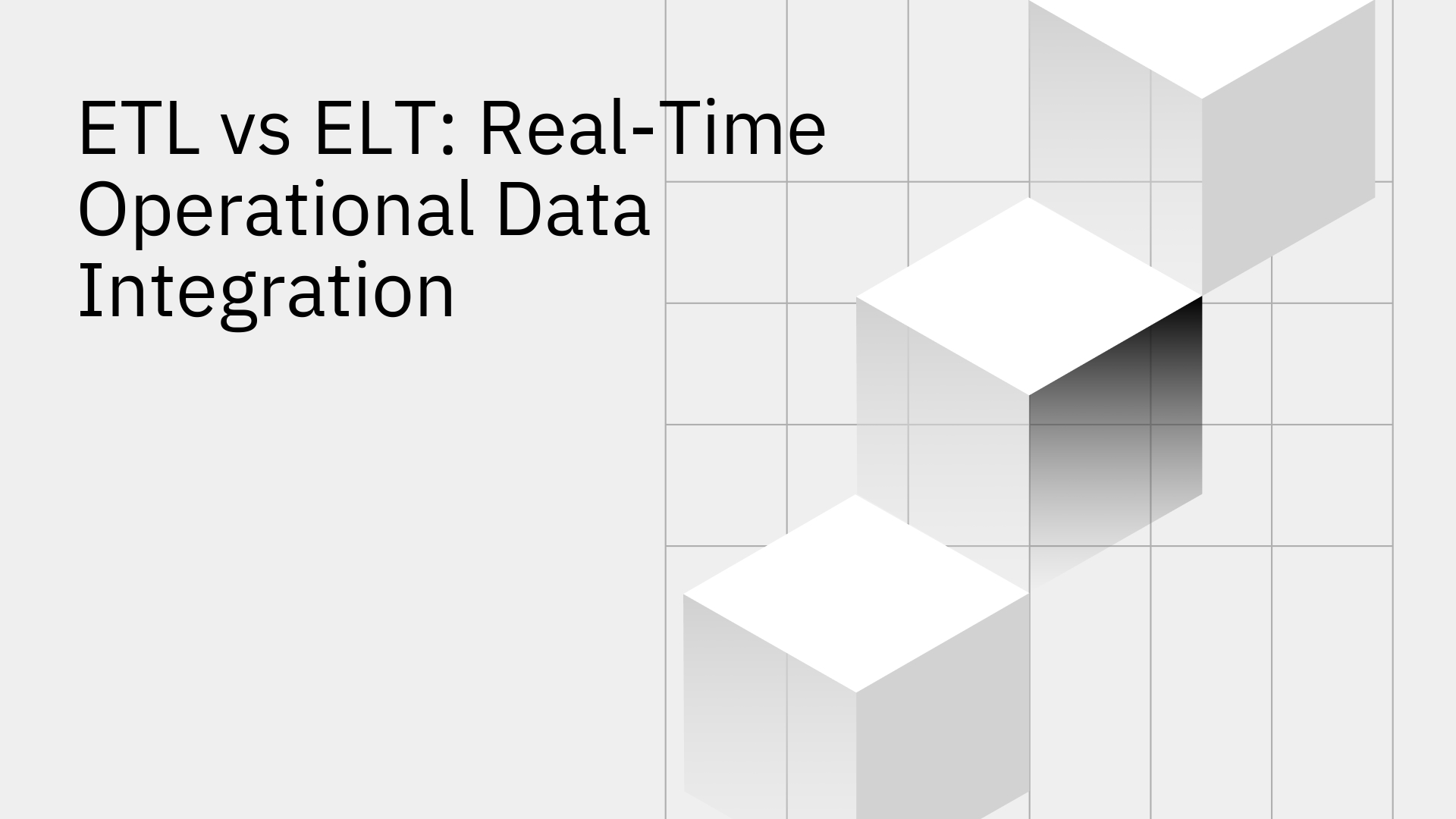
Data integration is fundamental to modern business operations, especially for workflows that depend on immediate, accurate information. The two primary methods for moving data have long been ETL (Extract, Transform, Load) and ELT (Extract, Load, Transform). The core difference is timing: ETL transforms data before loading it into a central repository, while ELT loads raw data first and transforms it within the repository. This distinction has profound implications for businesses that rely on real-time operational data to function.
ETL is the traditional, three-stage approach to data integration that has been the industry standard for decades, primarily serving business intelligence (BI) and reporting functions.
The process unfolds in a specific sequence:
Pros & Cons:
ELT is a modern, cloud-native approach that reorders the traditional process to leverage the power and scalability of modern cloud platforms [3].
The ELT sequence is:
Pros & Cons:
Choosing the right data integration strategy requires understanding the fundamental distinctions between these two methodologies. The following table provides a direct comparison of the ETL vs ELT difference.
These differences highlight the evolving landscape of data integration, influenced heavily by cloud technology and changing business needs. For more details, explore the ETL vs ELT: Key Differences and Latest Trends.
Both ETL and ELT are primarily one-way data pipelines. They are designed to move data from various operational systems into a single analytical repository like a data warehouse. While effective for BI and reporting, this model fails to address the needs of real-time operational workflows.
This one-way flow creates significant limitations:
For example, a support agent viewing a customer ticket in their helpdesk software may not see that the sales team just closed a major upgrade for that same customer in the CRM. This disconnect leads to a disjointed customer experience and missed opportunities. For true operational efficiency, data must flow not just to a warehouse, but between applications in real time. This is where advanced real-time data integration tools become essential.
For operational use cases, the next evolution beyond traditional ETL and ELT is bi-directional synchronization. This process synchronizes data between two or more systems in real-time, allowing an update in one system to be reflected instantly across all others.
Bi-directional sync solves the operational data problem by creating a single, unified, and always-current view of data across the entire application stack. It tears down data silos and empowers teams with the confidence that the information in their native tools is accurate and complete. This approach represents a paradigm shift from one-way data pipelines to a living, interconnected data ecosystem, a concept further explored in our ETL vs ELT for Bi-Directional Sync: 2025 Ultimate Guide.
Stacksync is an enterprise data integration platform built specifically to address the need for real-time, bi-directional operational sync. We move beyond the ETL vs. ELT debate by focusing on the live data synchronization between the CRMs, ERPs, and databases that run your business. Our platform is engineered to eliminate data latency and empower your teams with consistent, reliable information where they work.
Key features of the Stacksync platform include:
Discover how to unify your operational systems with Stacksync, the Data Sync & Workflow Automation Platform.
The ETL vs. ELT debate is centered on how to best populate an analytical warehouse. ETL offers a traditional, structured approach that ensures data quality but suffers from latency. ELT provides a faster, more flexible, cloud-native model for large-scale analytics but remains a one-way pipeline.
However, for modern businesses that demand operational agility, neither model is sufficient. True efficiency requires looking beyond one-way pipelines and embracing real-time, bi-directional synchronization. Platforms like Stacksync provide the purpose-built infrastructure to unify operational systems, eliminate data latency, and empower teams with the always-accurate data they need to succeed. To understand more about these data integration methodologies, you can read about the ETL vs ELT: Differences & Which to Use.